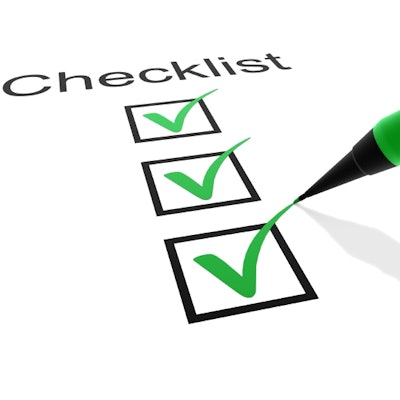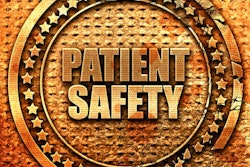
Checklists may be a practical and efficient way to improve patient safety in the dental office. Two safety experts explained why in the July issue of the Journal of the California Dental Association.
Research suggests dental practitioners average two errors per day, and about 1% of these errors lead to an adverse event. Checklists may help prevent these human errors, according to article authors Oluwabunmi Tokede, BDS, MPH, and Elsbeth Kalenderian, DDS, MPH, PhD.
"A healthcare system truly focused on health demands continuous attention to patient safety," wrote Drs. Tokede and Kalenderian, who focus on patient safety research at Harvard University and the University of California, San Francisco, respectively (CDA Journal, July 2019, Vol. 47:7, pp. 439-444). "Against this backdrop, checklists emerged as practical and effective tools for realizing a safer healthcare environment."
Medical professionals already use checklists to help reduce errors of omission, improve the use of proven best practices, and create reliable evaluations. The authors believe checklists can do the same for dentistry.
"The use of checklists is founded on the principle that human error is inevitable, and checklists have proven to be effective in various aspects of performance improvement and error prevention and management," they wrote.
“Good checklists are, above all, practical”
Checklists consist of action items, tasks, or behaviors that are checked off as they are completed. They come in two forms: read-do or do-confirm. With the first type, practitioners check off list items as they perform them. With the second, practitioners practice from memory, then pause and confirm they did not miss any crucial steps.
Both types of checklists are important because even highly skilled clinicians can occasionally miss crucial patient safety steps. Well-designed checklists minimize patient safety risks, reduce errors of omission, and ensure clinicians follow the best possible protocols, the authors noted.
"Good checklists are, above all, practical," they wrote.
Of course, having a checklist is no good if it's not being used. And while checklists may be helpful, they're not the only factor in ensuring patient safety in a practice.
"The mere existence of a policy and checklist does not ensure patient safety," the authors wrote. "To be clinically effective, there needs to be a strong, committed leadership to patient safety, standardization of processes, cross-checks, monitoring and measuring compliance, sharing lessons from incidents, reviewing processes, educating and empowering team members, measuring effective team communication, and feedback from frontline staff."



















